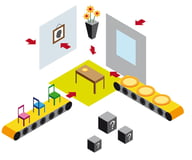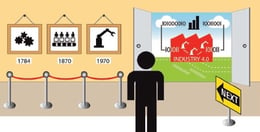What Does Integrated Planning Really Mean?
Brian Hoey - January 23, 2018

Imagine you’re playing musical chairs. The music starts and stops and your instinct is to rush to the nearest seat before your competitors beat to you to it—but instead of a circle or a row of chairs, the chairs are scattered and hidden around the building at random. No one knows how many chairs there are, and no one is sure how to reset them before the next round begins. Surely this would be a confusing way to play the game, just as it would be a confusing way to run a business. And yet, many companies do just that, keeping real resource allocation hidden within planning siloes and mission critical data obscured by layers of disconnected IT infrastructure. The result is that long term cross-operational planning becomes impossible, with planners stuck in a reactive loop of constantly responding to roadblocks without the ability to be proactive. Integrated planning has long been touted as cost saving solution for complex businesses, one that specifically addresses the break-fix mentality that mires companies in minute-to-minute logistical snafus, but what is it, exactly, and how does it work?
Strategic, Cross-operational Decision-making
Simply put, integrated planning is a means of facilitating smart decision making and planning across all divisions of a given company. By connecting various planning processes to one another and promoting end-to-end (E2E) visibility, it helps manufacturers to take a holistic view of their operations and to define clearly articulated, company-wide goals. Where traditional planning infrastructure can lead to decision-making siloes and fragmented processes that often work at cross purposes, integrated planning ensures that all key stakeholders are working towards the same goal in full knowledge of each other’s actions and the organization-spanning effects that those actions will have.
Shadow IT and Postmodern ERP
Many companies that worry about Shadow IT (i.e. IT purchased with the input of actual IT professionals or management) have responded by adopting a Postmodern ERP mindset, in which different IT solutions are all integrated into a common, interoperable system that prevents siloes and promotes visibility. Shadow IT, however, is not the only variety of operational disconnect that can occur; many other resource management decisions across the supply chain can become “shadowy,” leading to divergent intra-operational plans and resource allocations that can be difficult to reconcile. In this way, integrated planning is akin to Postmodern ERP, insofar as it works to promote interoperable systems not just with regards to IT, but in terms of strategic, operational, and tactical planning in all their various forms. And, in fact, the kinds of planning solutions under discussion in this post are important pillars of the Postmodern ERP mindset.
Working hand-in-hand with a Postmodern ERP, an integrated approach to planning can help businesses:
- Gain a holistic understanding of the supply streams, product lifecycles, transport logistics, and the relationships between them; this can lead to the discovery of possible new efficiencies and the ability to foresee bottlenecks in advance.
- Utilize a continuous planning interface designed around up-to-the-minute information from every point on the value chain, ensuring that planners work towards the same goals with the same understanding of company resource usage.
- Increase connectivity by way of interoperable applications and systems that promote rather than reduce cross-operational communication.
Advanced Analytics
Supply chain management is obviously much easier when the nature of the entire supply chain is illuminated for all stakeholders within an organization, which is what integrated planning can offer for complex, variant-rich companies that would otherwise be bogged down by siloes and incomplete data. There is however, another key driver of added-value that these planning solutions can provide: advanced analytics. Not only do these advanced planning solutions make it possible to integrate many disparate elements of the supply chain management process, but, through increased operability and E2E visibility, they also help improve data quality and centralization. The result is that planning that was once done with pen and ink or Excel spreadsheets can now be done in an environment that offers advanced analytics support. This too, can help add value in a number of ways:
- Reduced transport costs through intelligent planning and forecasting
- Enhanced simulations and “what-if” scenarios
- Trend analysis and pattern recognition to connect different segments of the planning process (i.e. capacity planning, container usage, routing, etc.) into more seamless workflows.
If by simply adopting an integrated solution for planning, manufacturers can promote Postmodern ERP efforts and bolster connectivity cross-operationally, then combining those efforts with analytics can yield not just stable resource management throughout a company, but true agility and adaptability—both keys to success in the world of Industry 4.0.
If you want to learn more get your Guide to Industry 4.0:
LATEST POSTS
- Understand Circular Economy in The Manufacturing Industry
- How Can Industry 4.0 IT Integration Be Achieved Smoothly?
- The Significance of Order Sequencing in Discrete Manufacturing
- How to improve your Supply Chain Management: The Power of Control Towers
- Optimizing Human Resource Scheduling in Manufacturing: A Technological Approach



